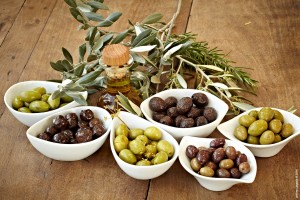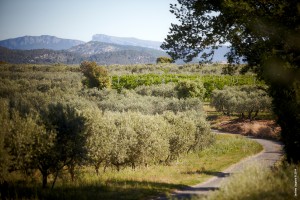The different tastes ?
Biodiversity, varied terroirs, specific know-how… the French olive oils are as different as unique this is why we don’t speak about olive oil but olive oils.
The olive oils from the South of France present wide range of tastes because of:
– Many varieties of olives : more than 1 000 in the world and more than 100 in France, endemic to a region
– Different terroirs presenting particular climatic and geologic conditions
– Specific know-how..
Why consuming French olive oils ?
Thanks to :
– unique varieties we cannot find somewhere else and to traditional varieties : many old orchards are still well-kept and exploited and most of the new plantations are made with traditional varieties.
– conditions of cultivation respectful of the tree and its environment : France developed a quality cultivation since the 90’s, nowadays some orchards are organic ;
– traditional know-how transmitted from generation to generation : farms as well as the structures of transformation (the mill for the olive oil, the confectioner for the olive) are small structures, based on a craft work (but using modern equipment), often run by families;
– a culture of diversity and of the particularities of territories : the development of the AOC in the 90’s and in 2000 and nowadays of the organic allow to maintain a varied olive culture very linked to the history of the production basins.
The varieties of olives
The first variable in the aromatic range of the olive oils is the choice of the varieties.
France has more than 100 varieties of olive trees, all have a particular cultivation zone more or less wide. Among the most well-known we can list :
– Picholine : located on a wide territory between Hérault and Var
– Aglandau : from Alpes de Haute-Provence to Gard, also in Vaucluse and Bouches-du-Rhône
– Lucques and Olivière : from the Pyrénées-Orientales to Hérault
– Cailletier : in Alpes-Maritimes
– Tanche : in the south of Drôme and in North Vaucluse
– Salonenque : in Bouches-du-Rhône and Var
– Rougette : in Ardèche
– Bouteillan : in Var, Bouches-du-Rhône, Alpes de Haute-Provence, Gard, Hérault, Aude
– Petit Ribier: in Var and Alpes-Maritimes
– and many other varieties…
As for other fruits, each olive variety has organoleptic particularities that give a specific taste to the olive oil, a pure fruit juice.
The « terroir »
The « terroir » also has a particular role in the taste of the olive oils.
– The climatic conditions are important in the taste of the olive oil: as for the wine, every year the olive oil will have particular characteristics even if the general taste doesn’t change ;
– The maturity of olives will influence the bitterness and the piquant of the olive oil ;
– The know-how linked to the terroir is also important depending on the varieties implemented on the territory and on productions habits, we will harvest more or less early the olives, mix or not the varieties, let matured the olives,…
The know-how
The extraction conditions are also important :
– For the quality of the olive oil : the olive is a fragile product that has to be stored and then grinded in good conditions in order not to develop defects in the final product. The nature of the tools used, the traditional system with a granit millstone and a hydraulic press or the “continuous” system with the centrifuge has no importance. But the work of the miller, and its seriousness in washing the different tools, is essential.
– For the gustative quality of the oil : this is the miller who chooses or not to let the olives mature, to mix the different varieties (and their percentage),… He gives a special taste to each of his oils.
If we take the different variables, varieties/terroir/know-how, and we mix them depending on the basin, you will easily understand that we can find an infinite gustative range in the olive oils from the South of France.










